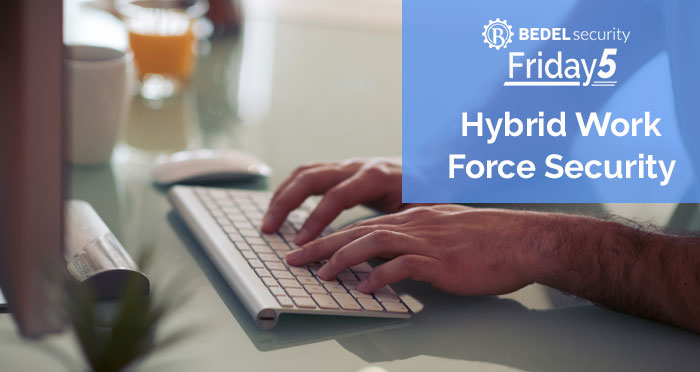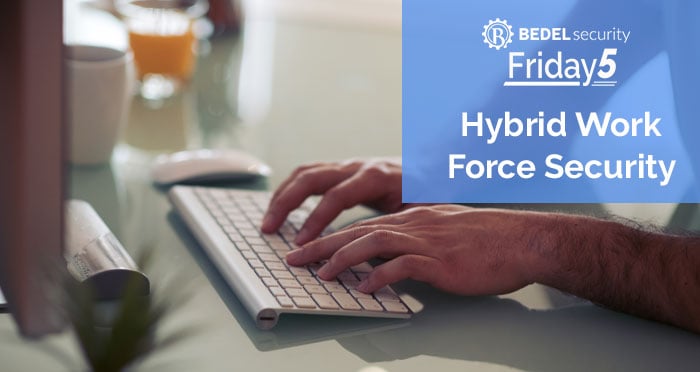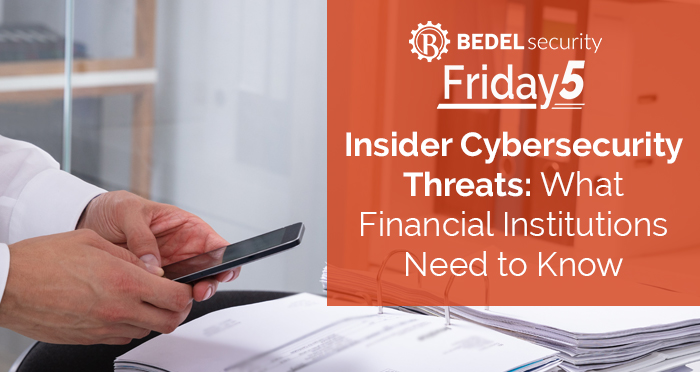Remote Work Flexibility is Here to Stay
It’s been a long and crazy two years since Covid showed up and changed the world. Yes, a lot of things are different now, but I’d like to take a few...


There’s yet another debate growing post-COVID. It’s not vaccinations, masks, or whether it’s safe to eat at a restaurant, it’s when and how much workers will return to the office. In considering the impacts of this change, most executives are concerned about employee engagement, productivity, and culture, but should they also be concerned about security?
If you are needing help with your hybrid work force security plans, please reach out to us at support@bedelsecurity.com.
Resources:
https://www.securitymagazine.com/articles/94952-security-implications-of-a-hybrid-workplace
Remote Employee Access
https://www.bedelsecurity.com/blog/remote-employee-access
Remote Access Risk Assessment
https://www.bedelsecurity.com/lp-remoteriskassessment
Remote Work Security
https://www.bedelsecurity.com/blog/remote-work-security
Do you need a separate penetration test for remote access?
https://www.bedelsecurity.com/blog/do-you-need-a-separate-penetration-test-for-remote-access
Surviving the post-pandemic landscape: 12 Technologies That Every Community Financial Institution Should Be Thinking About
https://www.bedelsecurity.com/lp-surviving-the-post-pandemic-landscape

It’s been a long and crazy two years since Covid showed up and changed the world. Yes, a lot of things are different now, but I’d like to take a few...

Community financial institutions face a wide range of cybersecurity threats, but one of the most concerning is insider threats. Insider threats refer...